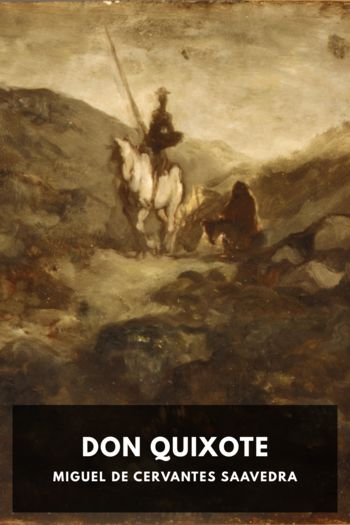Lady Joker, Volume 1, Kaoru Takamura [best affordable ebook reader TXT] 📗

- Author: Kaoru Takamura
Book online «Lady Joker, Volume 1, Kaoru Takamura [best affordable ebook reader TXT] 📗». Author Kaoru Takamura
With grim determination, Hatano began flipping through the pages. One, two, ten, twenty, thirty-one pages of stationery covered with thin, meticulous characters. On the thirty-first and last page was the date, June 1947, and the signature of Seiji Okamura.
Seiji Okamura. After ruminating on the name he had never even heard before, Hatano put down the letter for the time being and grabbed the telephone receiver. He dialed the number of their vacation house in Oiso, and after about a dozen rings, he heard his wife’s curt “Yes?” as if she already knew the only person it could be on the other end of the line.
“Do you know a man named Seiji Okamura?”
“Who?”
“Seiji Okamura. He’s one of your father’s brothers.”
“My father’s last name is Monoi. Don’t be stupid.”
He was unaffected by the abrupt phone conversation. After setting the receiver down, Hatano brought out a dictionary from his study and began to handle each page of the letter again as he would a stack of patient charts. He looked up the reading of each arcane character he was unsure about in the dictionary and meticulously noted the proper reading in the margin.
The author of the letter began with the words, “I, Seiji Okamura . . .” and first explained how someone who had left the company came to write a letter to that very company. There was mention of a man named Noguchi who had also left Hinode for some reason before the war, and of how Okamura’s relationship with this Noguchi caused him to fall under the scrutiny of the police and the company—allusions that made Hatano, the son of a liberation committee activist, perk up with recognition.
Okamura proceeded to talk about his birthplace, revealing the geographical features of a village that was apparently near Hachinohe in Aomori prefecture, the lifestyle during the early Showa era in the 1920s, his family structure, and the whereabouts of his brothers and sisters. According to the letter, Okamura was the second oldest of four siblings, and he had one older brother and a younger sister and brother. The eldest son died in the war, so his younger brother—the one with the disability in his left eye who became an apprentice at the foundry in Hachinohe at the age of twelve—must be Hatano’s wife’s father, Seizo Monoi. As he continued to read, Hatano tried to picture the man’s face. Hatano had seen him three weeks ago at his son’s funeral, but his mind had been far away at the time, so between that and the fact that he had had very little contact with him previously, Monoi’s face was blurred in his mind, his features indistinct.
According to the letter, Okamura was adopted into a wealthy merchant family, and after graduating from Tohoku Imperial University without any difficulty, he joined the research lab of Hinode’s Kanagawa factory, was conscripted to the front just like everyone else, and later demobilized and sent home. In his life immediately after the war, Okamura diffidently and somewhat feebly called himself a “laborer.” Hatano did not know what it felt like to identify as such, but he could at least understand that at the time the letter was written, the position of a “laborer” was in direct confrontation with that of a capitalist. Then again, Okamura seemed more like a forerunner of the era of union-management cooperation that began in the early 1960s, more than a dozen years after the letter was written, one who should have been welcomed by those company men, and so he was quite different from the “laborers” that Hatano remembered. Hatano could faintly recall the general strike of February 1, 1947, but in his memory his father appeared with a white headband around his head, going off to liberation committee meetings and canvassing door-to-door day after day, shouting and yelling in a way that made him seem like a stranger.
Meanwhile, Okamura had written with startling naïveté about his interaction with this man Noguchi from a segregated buraku community whom he had met at the Kanagawa factory before the war. Okamura seemed at that point to have finally learned about the existence of discrimination for the first time, yet he still languished in the realm of confusion—even the part where he questioned how Hinode’s Kyoto factory wrongfully terminated those other three employees from the segregated buraku community was far from what could be called criticism against the company. If anything, until the very end, Okamura seemed to consider Noguchi and the others “Hinode employees” just like himself, even going on about how moved he was by the brilliant life force of Noguchi, whom he encountered again in Tokyo in late 1946. His perspective, which seemed to empathize deeply with the human condition, could not be more different than that of an activist.
No, it was utterly different . . . Hatano murmured to himself. The same day in late 1946, when Okamura said he had run into Noguchi at Hamamatsucho train station in Tokyo, Hatano’s father would have also gone there to attend the liberation committee’s national convention, which was held nearby in Shiba. For the first time in his life Hatano tried earnestly to picture that distant day. By then, his father bore no trace of the handsome young man his mother had fallen for so passionately. In the eyes of the triumphant man who walked along the platform of Hamamatsucho Station—nostrils flaring, his flushed face now almost indistinguishable from the other activists who had also absorbed the lessons of socialist textbooks—the sight of a man like Okamura, his head hanging down and deep in self-reflection, would not have even registered. The same would have gone for that guy Noguchi—Okamura would not even recognize him once they had parted ways and Noguchi went to join the convention, donning the look of an activist. No, Seiji Okamura was





Comments (0)